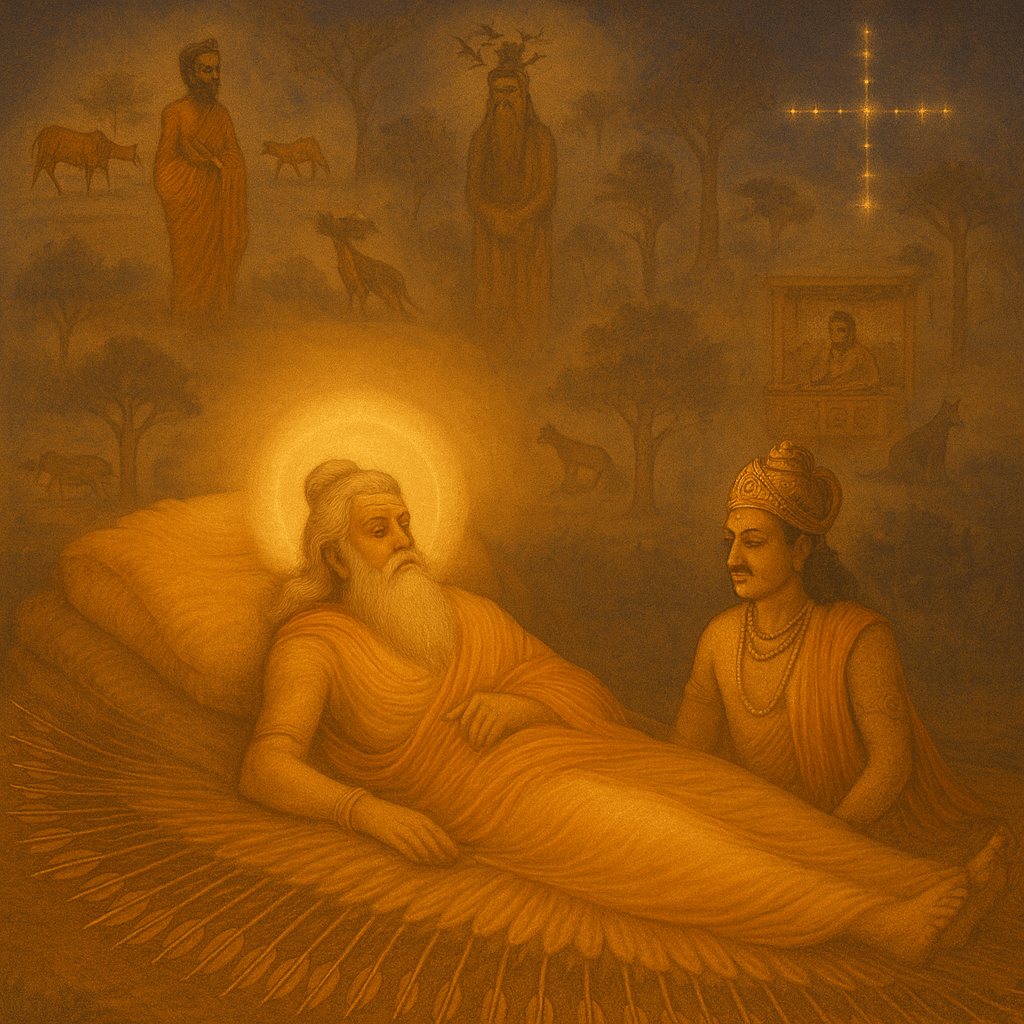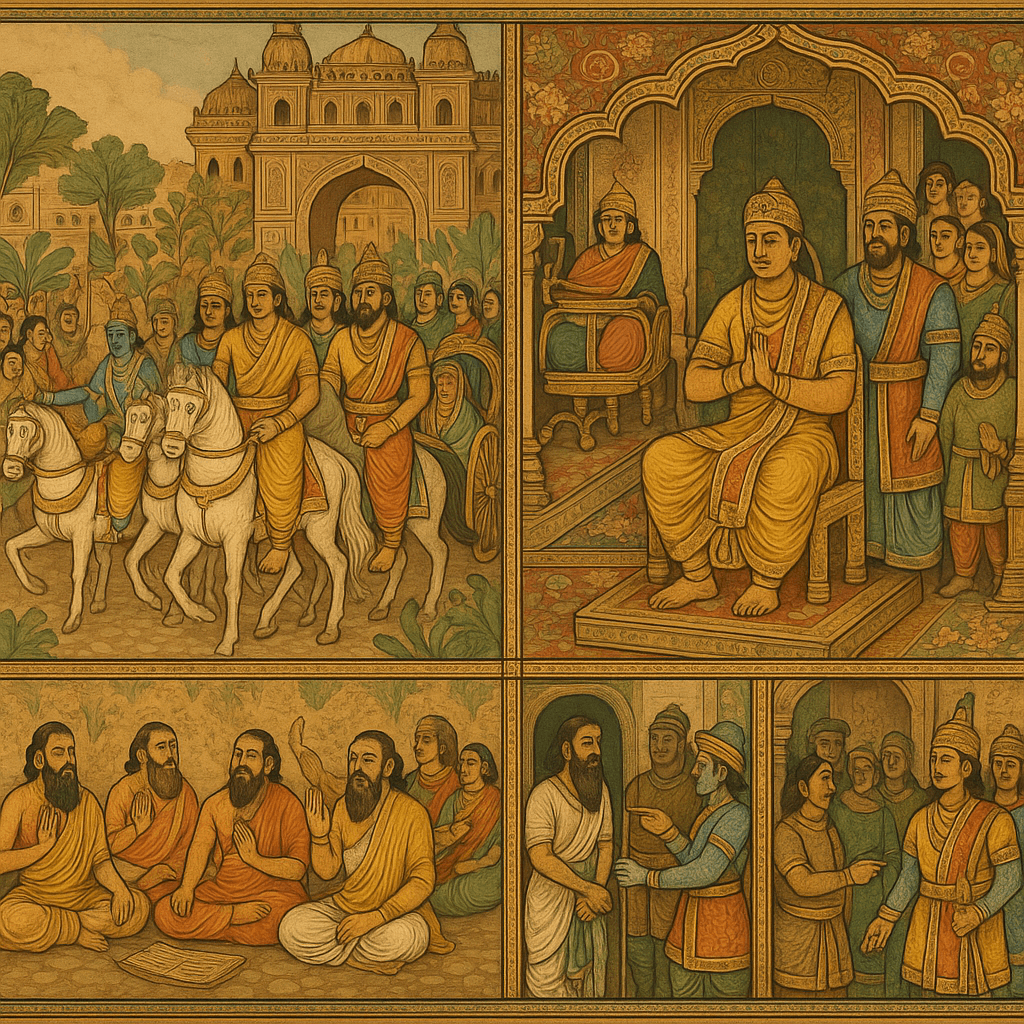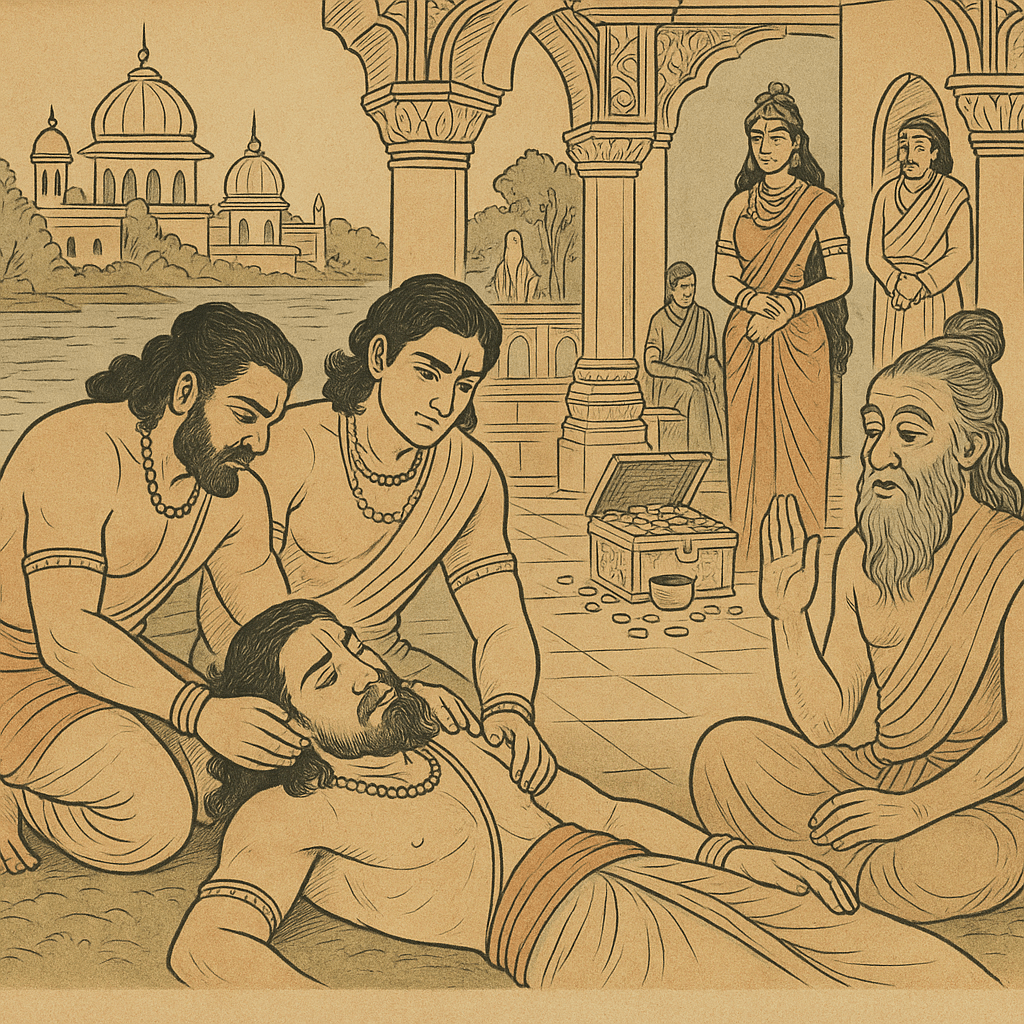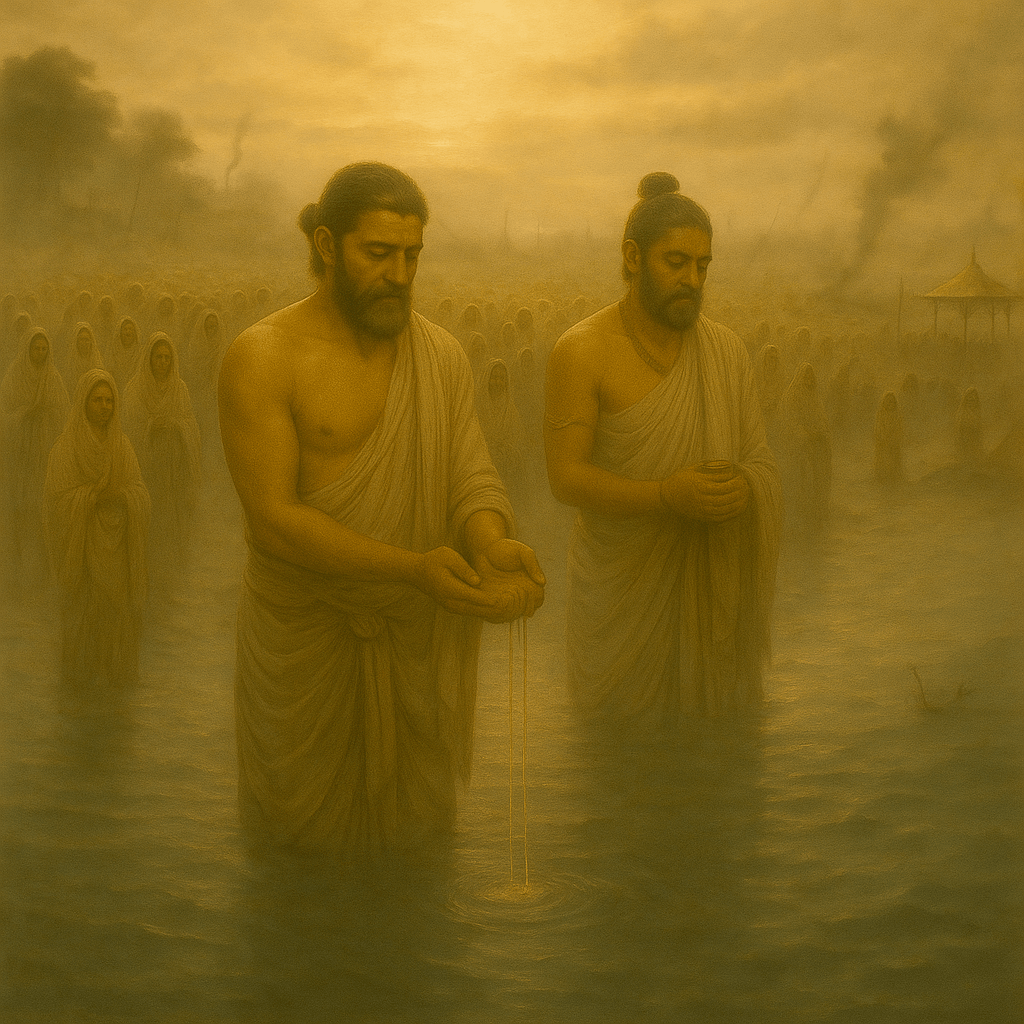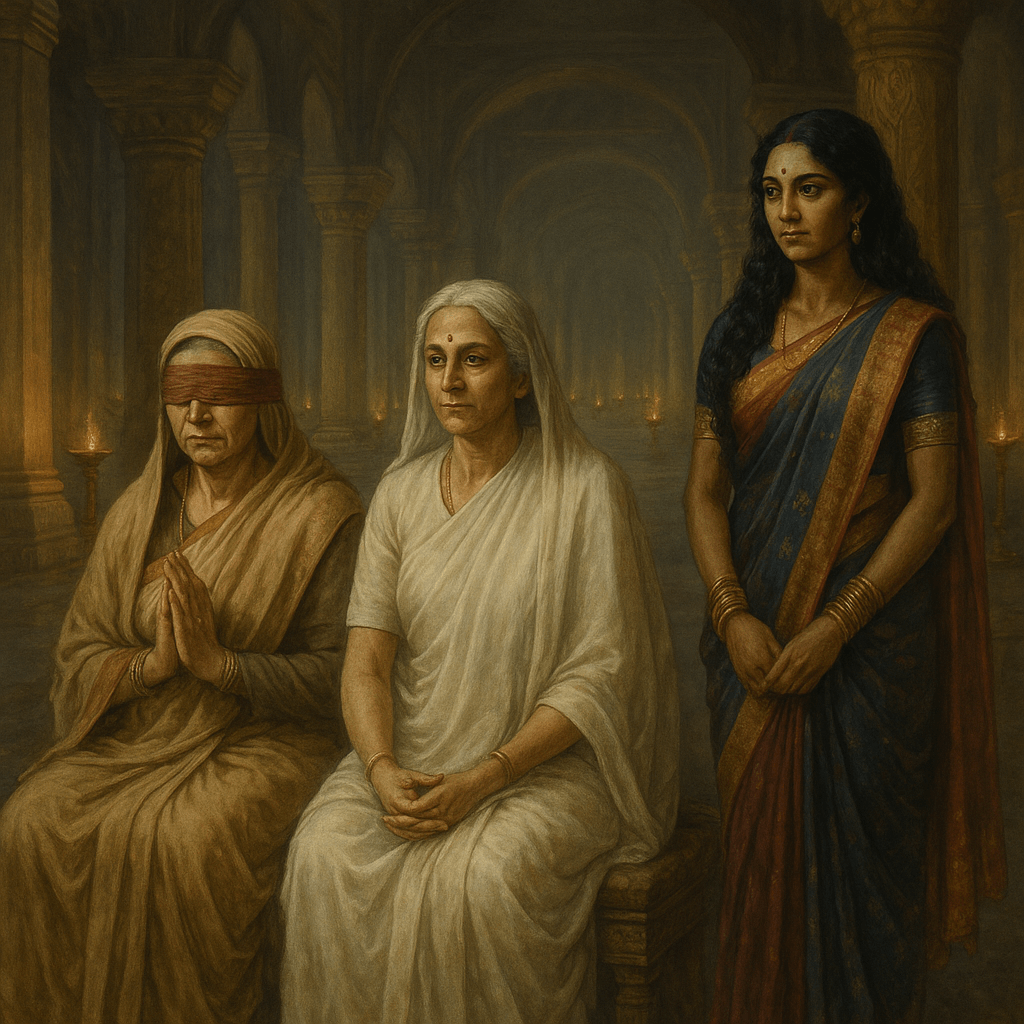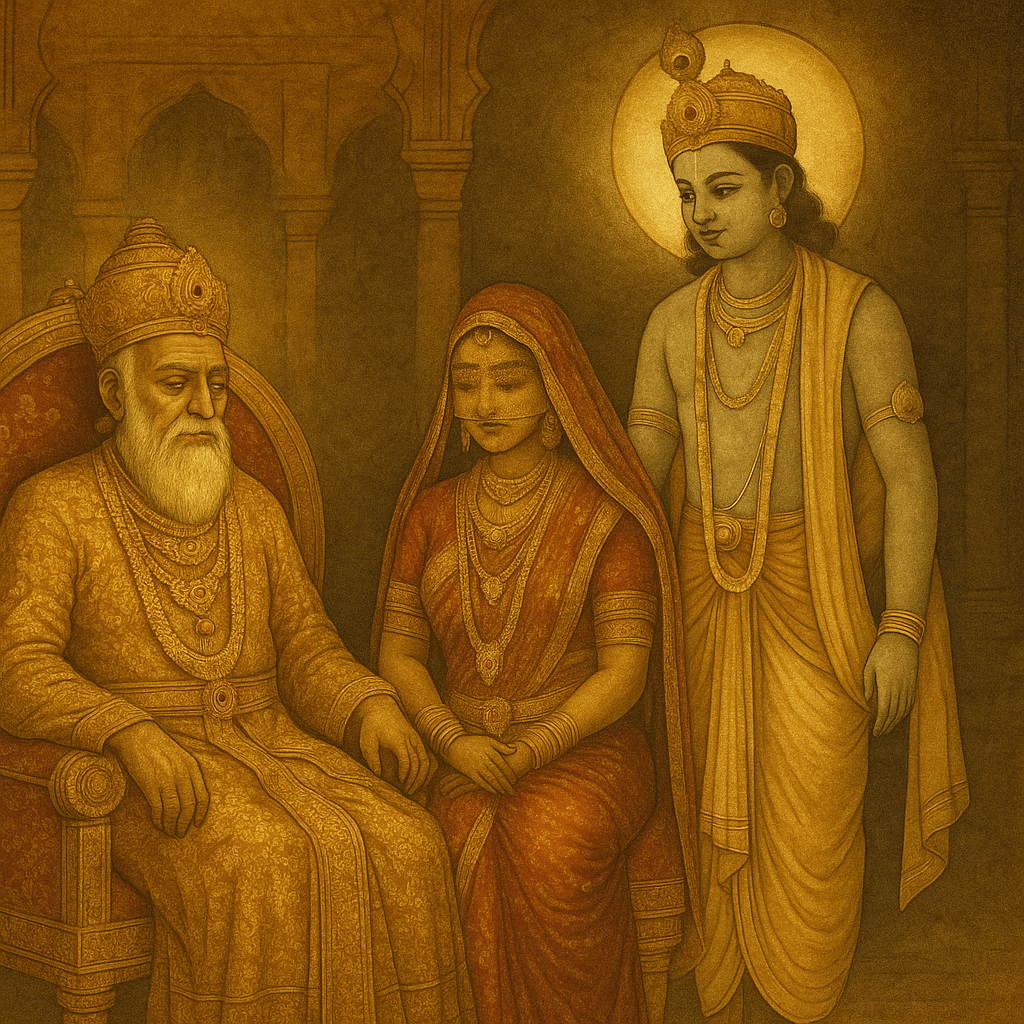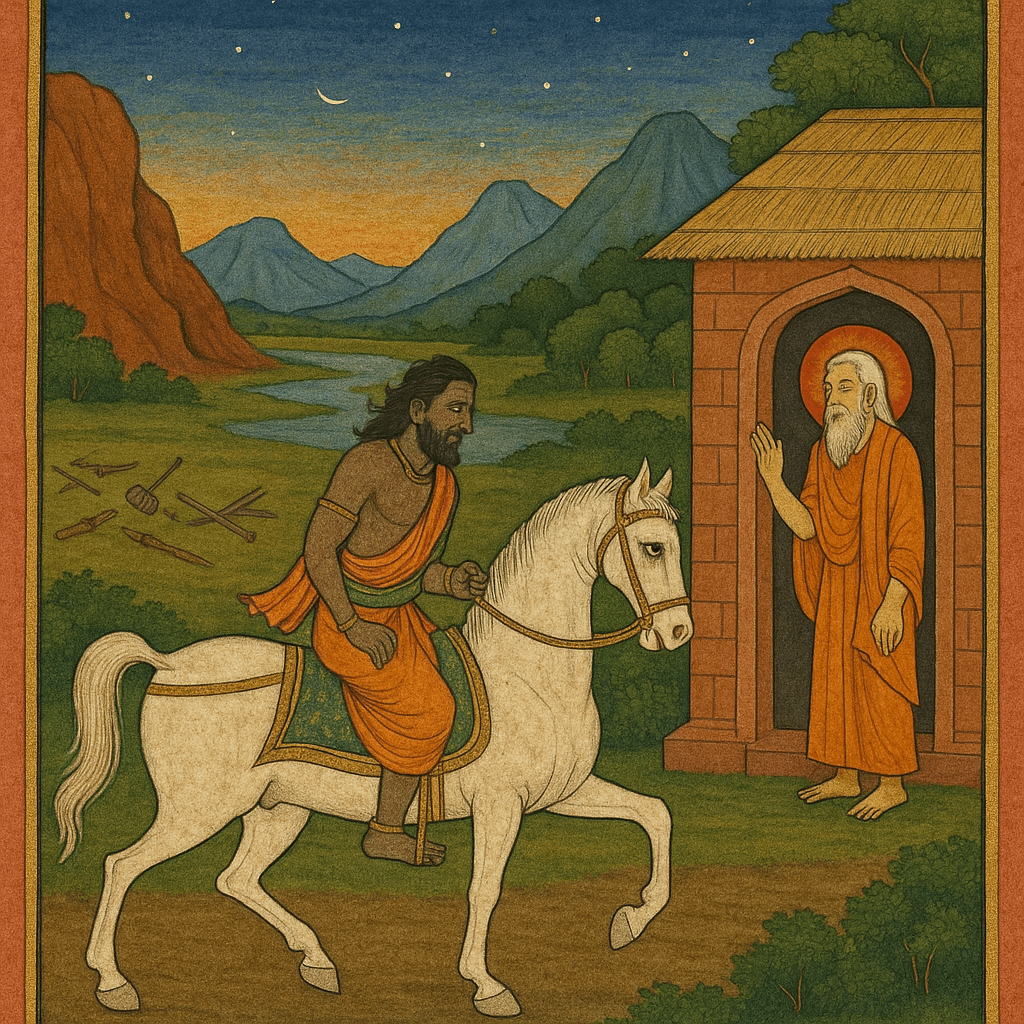Danadharma Parva is the eighty-ninth upa parva included in the thirteenth maha parva named Anushasana Parva. Vaishampayana continued the narration to Janamejaya in reply to his queries as follows.
What was the story of Gautami, her son, Kaala, and Karma told by Bhishma?
Gautami was a lady sitting near a forest. Her son had died due to the bite of a serpent. Vyadha was a hunter; he searched for the serpent, tied it with a rope, and brought it in front of Gautami.
Vyadha asked Gautami how the delinquent snake should be killed. Vyadha was able to kill it by cutting it into many pieces or by cutting off its head with a sword. But Gautami was very patient and requested Vyadha to leave the serpent and let it go free. Vyadha accused the serpent very much. Gautami tried to convince him by telling him about time, the Kaala.
Then, Kaala appeared there as Kaalapurusha and explained his innocence in the killing of her son. Kaala explained that according to Karma phala, the snake had been induced to bite her son. Then, Gautami told that it was her own Karma phala (meaning the result of one’s own actions) that had put her into sorrow. So she should not kill the serpent and sin again. Non-violence was a better policy.
Later, Vyadha disappeared from there; her son got up as if from sleep, and there was no serpent also. The message was in support of life donation. Thus, Bhishma explained non-violence to Yudhishtira.
Why did Bhishma tell the above story to Yudhishtira, highlighting life donation?
Bhishma told the above story to Yudhishtira, highlighting life donation to the serpent and giving detailed explanations of Karma Siddhanta, to remove his sorrows that had arisen in his heart due to the war. Yudhishtira was frequently thinking about the war, as he was responsible for killing Karna and for Bhishma lying with wounds on the battlefield.
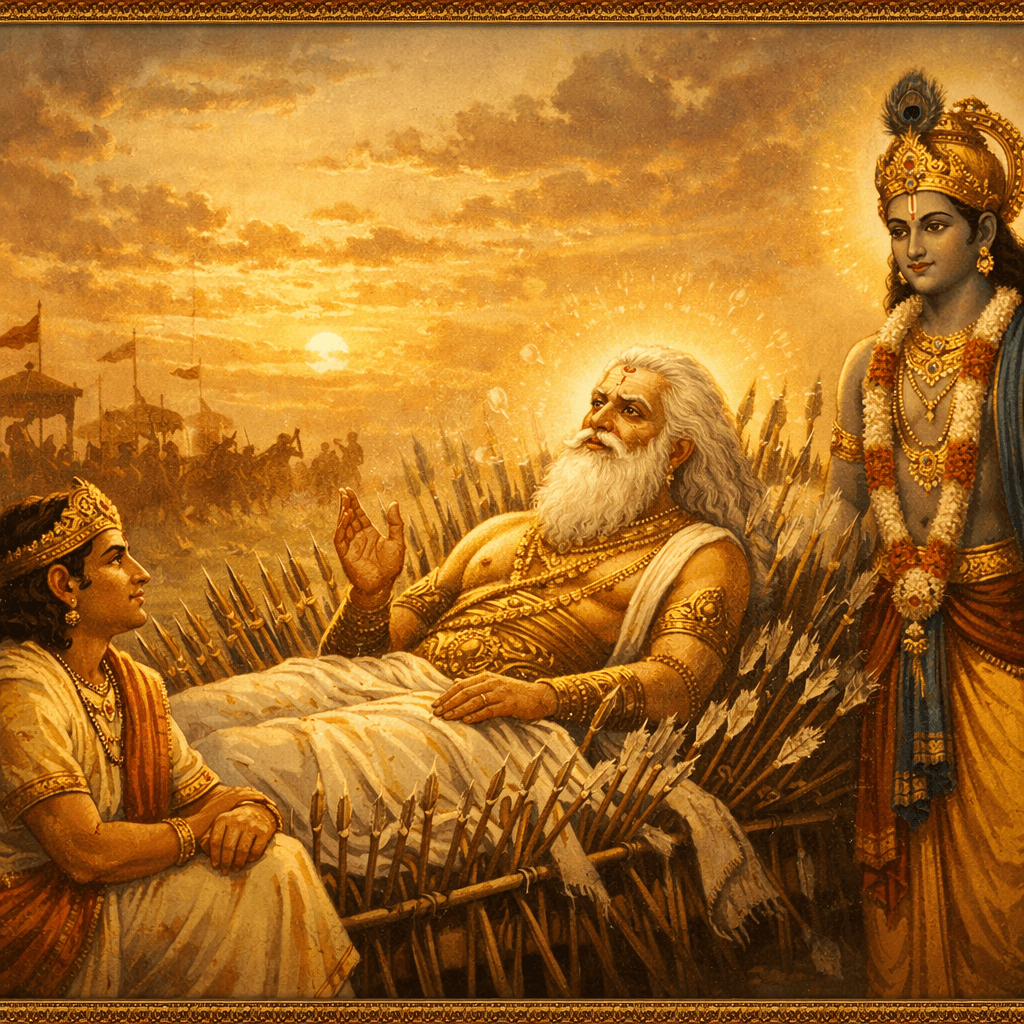
Bhishma had seized the young lady called Amba and denied her freedom of life. When Dushasana insulted Draupadi in the court session, Bhishma, due to the presence of acting emperor Duryodhana, kept silent, and so he deserved his sufferings and failures on the battlefield. Details about the past life of Karna are already available in the article Karma Siddhanta. For the resulting happiness or sorrows, one’s own past actions were the reasons. Hence, there was no need to feel sorry, and Bhishma consoled Yudhishtira.
What was the most famous recitation of Bhishma in this chapter?
Vishnu Sahasranama, or the thousand names of Vishnu in Sanskrit verses, was the most famous recitation. Under Anushasana Mahaparva, in Danadharma upa parva, this chapter of the Mahabharata was told by Bhishma to Yudhishtira before his Yoga Samadhi in Kurukshetra after the war.
Continue reading
